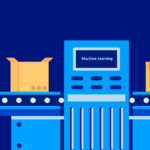
Retail Analytics-Why it is important?
22 January 2020
Machine Learning in Supply Chain Optimization
22 January 2020

Published by
BluePi
Data-Driven Business Transformation
Demand forecasting retail-Best practices
Best practices for smarter predictions
Demand forecasting retail is one of the toughest jobs. One has to look into the existing market data, store performance, marketing performance, the changing patterns of the target market and more to be able to predict consumer behavior and demand – even if it is for a single product line. Having to look into so much of data to make business decisions is obviously prone to a lot of errors. Most times people who work on demand forecasting are not able to tie all data points together. This results in them making predictions that are sometimes correct, but mostly inaccurate.
Right from obsolete stock to an inventory that is too low, the retail business faces losses across various sales channels during promotions due to the slightest of inaccuracy in demand forecasting. That’s why in this post we’re talking all about demand forecasting retail and the best practices to follow to increase margins while decreasing your cost of inventory.
What is demand forecasting retail?
Demand forecasting is a segment of predictive analytics that uses data to understand and predict customer demand. The data helps businesses make informed decisions about product planning and inventory management, keeping their supply chain optimized at all times. Simply put, demand forecasting retail helps businesses predict what customers from your target market will buy, how much of a product they’ll buy and when they’ll make the purchase. Challenges with existing demand forecasting retail.
There are many demand forecasting solutions that retailers are making use of today. While some of the methods lead them to make timely forecasts to increase their sales and revenue, the others only eat into their resources, leading to unpreparedness and losses.
1. Inaccurate demand forecasting
Increasing the forecast accuracy is the only way to drive top-line and bottom-line growth; especially in a competitive retail market. The existing demand forecasting retail solutions and methods are not designed to take into account multiple data sets parallelly, also optimizing the data as market trends change.
2. Ineffective promotional forecasting
Holiday season sales, flash sales or BFCM, retailers have the toughest time forecasting the impact of promotions. They often end up losing sales due to less inventory or bearing losses caused by over-stocking. Most retailers are not able to accurately forecast sales during promotions.
3. Mismanagement of inventory levels
Most retailers are not able to ensure the right product is available at the right time. This is caused by inaccurate demand forecasting retail. They are not able to take into account factors like the consumer’s purchase behavior during a period and how it changes over time.
4. Increase in safety stock
When a retailer isn’t sure about the sales they will be able to make over a period of time, they end up relying on safety stock. They do so to ensure they don’t lose any sales due to low or zero inventory during the period.
5. Lack of a single view of demand
Right from pricing to promotion strategies, retailers tend to make disconnected business decisions when they don’t have access to accurate demand forecasting retail. The lack of a single view results in independent decisions that often result in inconsistency across the enterprise.
So how does a retailer ensure their demand planning solution is leading to accurate forecasts? Here are some demand forecasting retail best practices one should follow.
Demand forecasting retail best practices
1. Establish a continual process
To achieve accuracy in demand forecasting retail, a retailer must invest in establishing a monthly process to analyze data. The demand planning solution used should systematically analyze all previous forecasts, compare them to the actual market results, identify the right and the wrong and pinpoint what the actual market demand was.
By understanding which data set or variable you did not take into account in your previous forecast, you’ll be able to minimize the errors in the next one.
2. Identify what to measure
When it comes to retail, there are a number of metrics a business can measure. But to be able to achieve accurate demand forecasting retail, you should focus only on those data points that matter to your business and impact its growth.
The metrics you measure may vary based on the industry you’re in and your rate of inventory turnover. But a few data points that you should consider taking into account while using a demand forecasting solution are competitor sales data, amount of obsolete stock, frequency of stockouts, shipments, orders, and POS data.
3. Decide the frequency of measurement
Once you know the metrics you want to measure, decide how frequently you want to be using the demand planning solution. You can set up a routine or a process to measure those data points on a weekly or a monthly basis. Alternatively, you can choose to measure certain metrics that help you forecast demand in a certain market over a defined period of time, and another set of data points over a different period of time.
4. Integrate data from all your sales channels
If you’re using an omnichannel marketing and sales strategy to grow your retail business, you need to bring all your data to one place. This means you’ll be aggregating all the data from the various sales channels for each of your products to create a single data set.
Doing so for all your key SKUs, you’ll be able to identify which channels are working the best for your retail business. You can also use the data for demand forecasting retail to plan your upcoming product launches, promotions, shipping and order requirements and more.
5. Measure accuracy at SKU, location and customer planning level
The primary driver of demand is customer requirements. Yet many retailers do not use their demand planning solutions to forecast at the SKU, location and customer planning levels. According to Gartner, there are only 17% of retailers who dig deep into those data sets to make demand forecasts.
If you measure the demand forecast error at the customer level, you’ll be able to understand your customers better. At the same time, you’ll also be able to identify the source of the error, allowing you to improve your demand forecasting retail for future business plans.
6. Ensure up-to-date data in real-time
Demand forecasting retail relies heavily on the accuracy of the data. If your raw materials data, finished goods data, inventory data, sales data and more are not up-to-date, you’ll miss out on critical market information, leading to inaccurate demand forecasting for future campaigns.
So another demand forecasting retail best practice is to ensure your data sets are as close to real-time as possible. This will ensure that at any given point, you’re not calculating demand with missing data points. Better demand forecasting with retail analytics
When it comes to using a demand planning solution effectively, the answer is data. You need to be able to unlock insights from your sales, product and customer data to make necessary demand forecasts. At the same time, you also need to be taking into account the changing market trends and consumer behavior. That’s a lot of data to aggregate, consume and derive insights and actionables from, making forecasts prone to human errors.
Driven by AI, BluePi enables retailers to make accurate demand forecasts. It helps them understand data with ready-made retail dashboards that highlight insights from the aggregated data from the store, the sales channels, and the supply chain. The KPI-driven dashboard helps retail business stakeholders gather insights on product demand and plan their promotions with data-backed strategies that ensure increased sales, revenue and profits.
Ready to achieve retail nirvana? Leverage accurate demand forecasts to reduce your inventory costs and maximize profits.


































